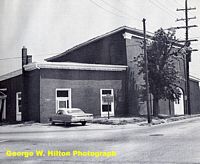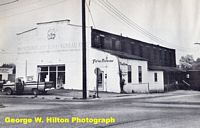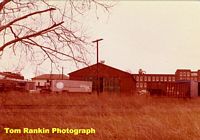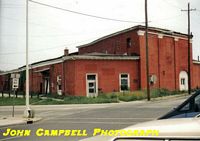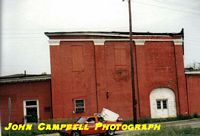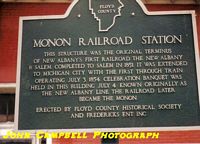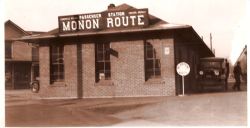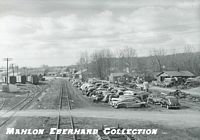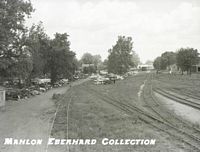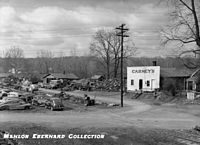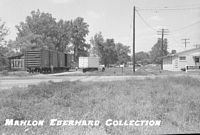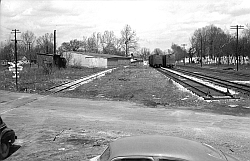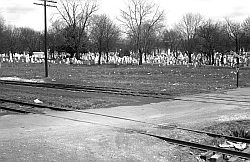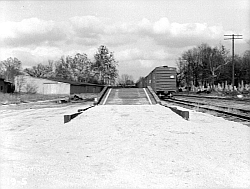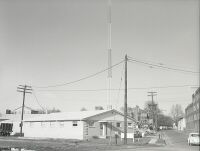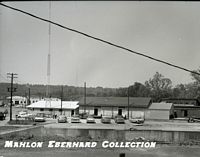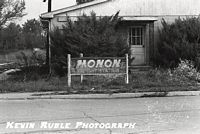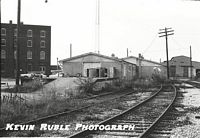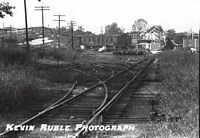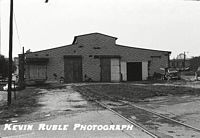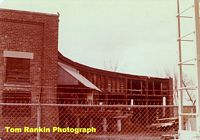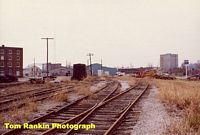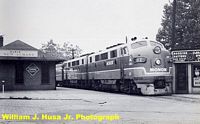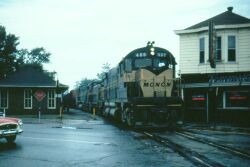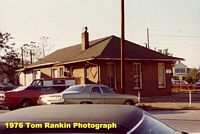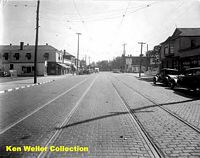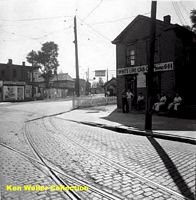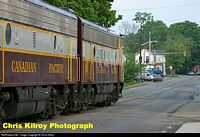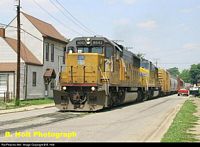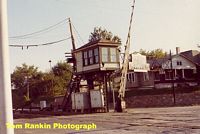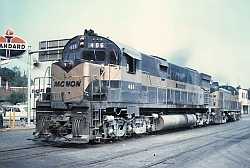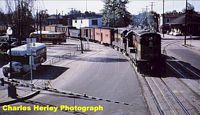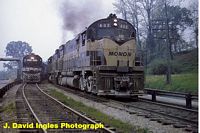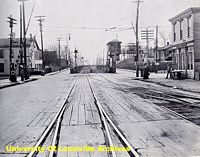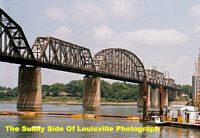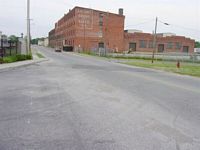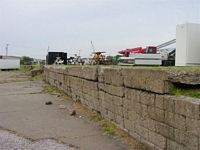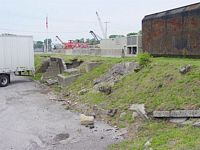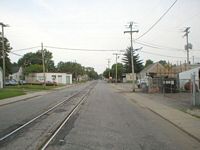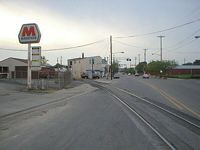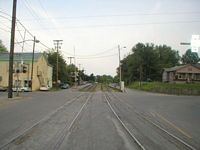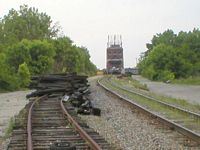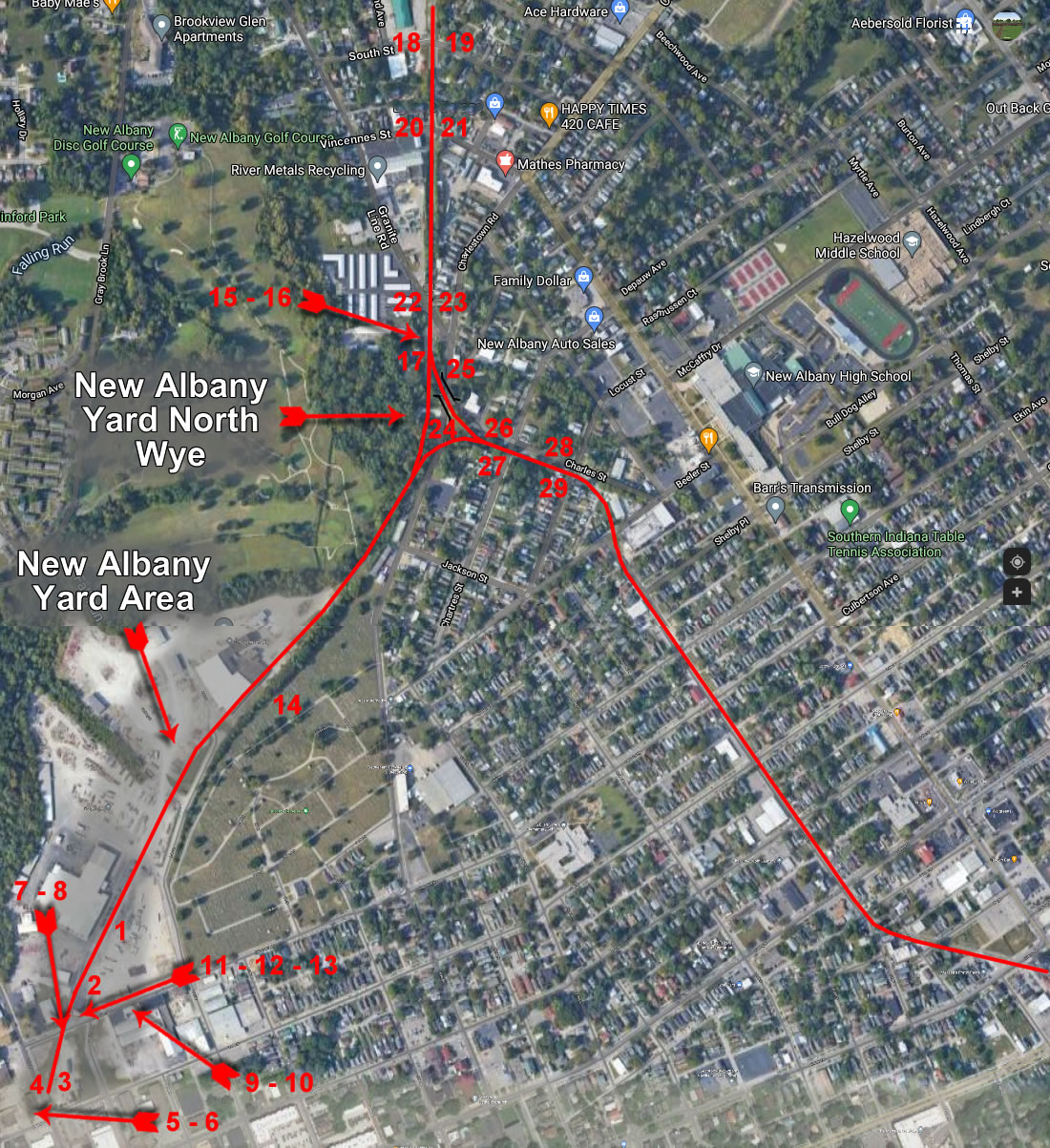|
M.P. 317.5 - 5th Subdivision - Nd The City of New Albany was founded in July 1813 by brothers Joel, Abner, and Nathaniel Scribner, who had arrived at the Falls of the Ohio a short time earlier from New York City. Named for the capital city of the founders’ home state, New Albany was platted by surveyor John Graham on land the Scribner brothers had purchased from Col. John Paul of Madison. The site was originally part of George Rogers Clark’s grant from the Virginia legislature. In 1819 New Albany became the seat of government for Floyd County, which recently had been formed from portions of Clark and Harrison counties. The county probably was named for Davis Floyd, the flamboyant politician who was the county’s first circuit court judge. The Ohio River and the steamboat industry were the foundations of the city’s economy during the mid-19th century. At least a half-dozen shipbuilders turned out scores of packet boats as well as famous steamboats such as the Eclipse, A.A. Shotwell, and Robert E. Lee. Shipbuilding also was accompanied by a wide range of complementary concerns, including machine shops, foundries, cabinet and furniture factories, and silversmith shops. By 1850 New Albany was the largest city in Indiana. Left and Right: Two of the orignial buildings used by the New Albany & Salem Railroad. The original station, freight house and shops were in excellent condition. Left: Original New Albany & Salem Railroad's station and shops building, 1985. Looking toward the south. Right: Circa 1977, original building, New Albany & Salem Railroad's car shops.
Left: Looking down the side of the old depot building. Right: View of the front.
Rare photograph of the depot in New Albany. Date unknown. -Mahlon Eberhard Collection- Left: Looking railroad south at the former yard at New Albany, Indiana. Exact date unknown. It is speculated these pictures are circa late 1940's very early 1950's. Right: Looking to the railroad north at a junk yard near the yard. Close up look at the junk/ scrap yard near the yard. Right: Looking railroad north. On the right side of the image is the New Albany freight house. Left: Near the freight house. Right: Right of way near the freight house. -MRHTS Photo Archives Collection- Piggyback loading ramp at New Albany. -MRHTS Photo Archives Collection-
Left: New Albany freight house. Right: Looking at the yard and end of the freight house platform. Left: The freight house, circa 1970. Really showing its age. Right: Looking railroad south at the freight house. Left: Another shot of the yard, circa 1970. Right: Old shops building, circa 1970.
New Albany, Indiana 1977. Left: Looking at the front of the old roundhouse at New Albany. Right: Side and back wall of the old roundhouse in New Albany.
Left: New Albany Freight house, circa 1976. Right: Another view, looking west. September of 1986.
Left: New Albany Depot, circa 1937. Right: 1949 southbound Thoroughbred passing by the depot. The train will be running the streets of James Brook's hometown. Freight movemnets at New Albany. Left: Southbound passing the depot, 1965. Right: A year later, 1966, another soutbound freight is captured passing the depot. More views of the depot in New Albany. Left: 1976. Right: 1959. Looking to the north from the cab of Train #6 about to arrive at the depot. During the second half of the 19th century New Albany experienced a substantial industrial boom, despite the collapse of its steamboat industry. The coming of the railroad spurred development of the pork-packing and locomotive repair businesses. In 1865 Capt. John B. Ford established the American Plate Glass Works. With financial support from his cousin, Washington C. DePauw, Ford built a prosperous business. After the crash of 1873, DePauw took over the firm’s operations and Ford moved to Pennsylvania, where he built a plant that eventually became part of Libbey-Owens-Ford in Toledo, Ohio. Meanwhile, American Plate Glass Company flourished under DePauw’s leadership, employing over 2,000 workers in 1881. When fuel shortages and economic problems forced the firm’s relocation in 1893, New Albany suffered a severe population loss as workers followed the company to its new location. New Albany, Circa 1936. Above Left Looking at the trackage in the streets at New Albany. Above Right: Another look at the trackage. Below: One more look. These images were taken by a local law firm. It is unknown the reason, however, there is a better than average chance it was in relation to some accident involving the railroad, or streetcar line. Original photographer unknown, exact date unknown.
In the early years of railroads in the United States it was common practice to build down the middle of streets. Track in New Albany revealed how old the Monon was. Train #73 lumbers down the street on June 30, 1965. Right: May 2003. CN Kentucky Derby special makes its way south through the streets of New Albany. Chris Kilroy photograph. More New Albany street running, modern day. Left: December 2003. Making its way slowly north through the streets of New Albany with a rare pair of Wisconsin Central SD45s. Chris Kilroy photograph. Right: June 4, 2004, UP 9842 heads down the street track in New Albany on former Monon tracks. B. Holt Photograph. Landmark to any Monon fan in New Albany. VI Tower. Left: Looking at the tower from the northeast, 1976. Left. Looking at the tower from the southest. No date indicated. Train #71 street running in New Albany. C-628 #406 in the lead. -Linton Moss Photograph- Left: Monon local #41 arrives in New Albany, May 1950. H15-44 are in the lead and one of the former troop kitchens has been converted into a rider caboose. Right:Monon freight, led by #402 passes a Southern Railroad freight as they both descend the K&IT bridge, May 1967. The bridge had a toll highway on either side of the tracks. The bridge was owned by the Monon, Southern and the B&O. Left: New Albany side of the K&IT Bridge, circa early
1900's. Also shown are the tracks and power lines of the New Albany & Louisville
Electric Railway. Right: Southbound train #73 on the Louisville side of
the K&IT bridge, June of 1971.
New Albany 2005 BMIA Agent Max Foltz sent these photos to me recently. Left: Looking South at the North Wye in New Albany. The tracks that go off to the left go to the K&I bridge. The tracks that go straight into the overgrowth go to what was the New Albany yards. Right: Looking North from the same spot. Left: Looking at where the tracks once ran that came from the yards to the Freight House in New Albany. Right: A view of where the freight house once stood from the former location of the tracks.
Left: The remains of the foundation of the freight house. Right: More remains of the foundation. You can see the caboose in the background. About mid way up the back of the trailer you can see some ties that still remain. Left: Street Running through New Albany. Looking to the RR north up 15th Street. Right: Looking to the south along 15th Street. Left: Looking north from Main and Vincennes Streets. Right: Looking south from the middle of the intersection. The area looks so much different than pictured above. Left: Looking north toward the intersection. Right: As far as I could go, legally. The KI&T Bridge. Only the former Monon line remains. Left: The west side of the bridge and former traffic lane. Right: Looking north from the bridge. -Rick Berg Photographs- New Albany Yard area 2021 Pictures by Nathan
Miles |

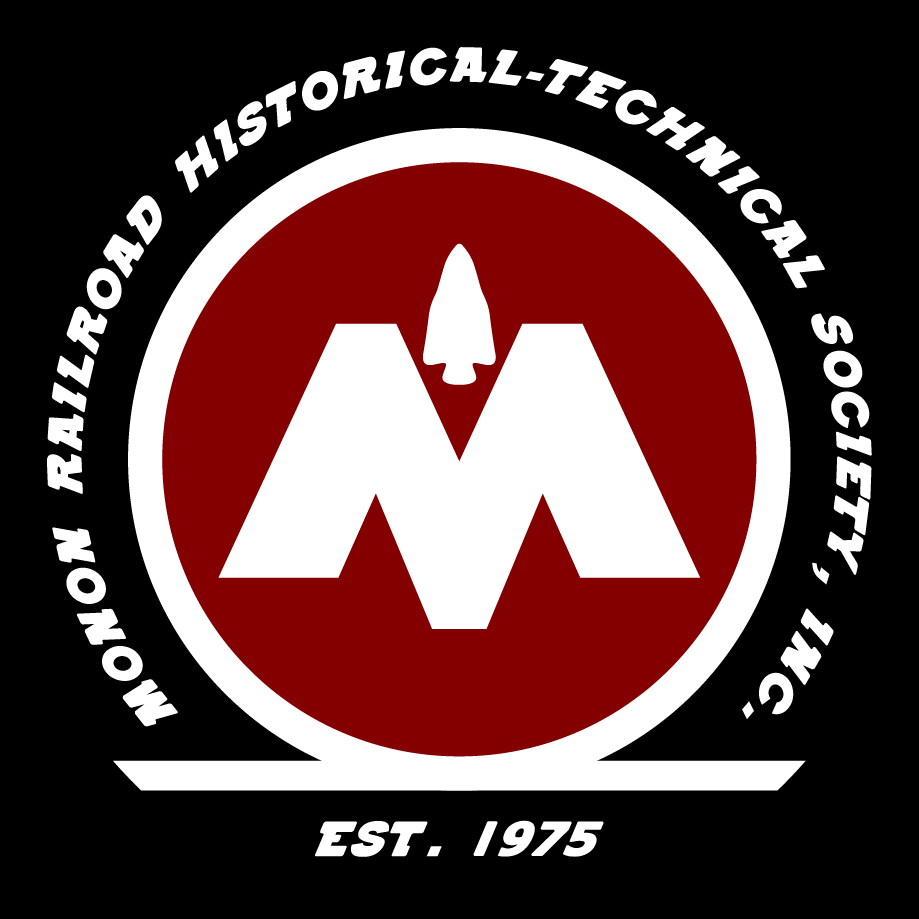
Return To Home | Contact Us | About Us @2004-2014 Monon Railroad Historical-Technical Society, Inc. All rights reserved.

